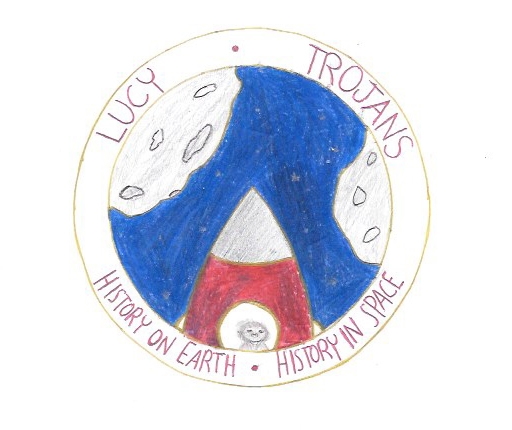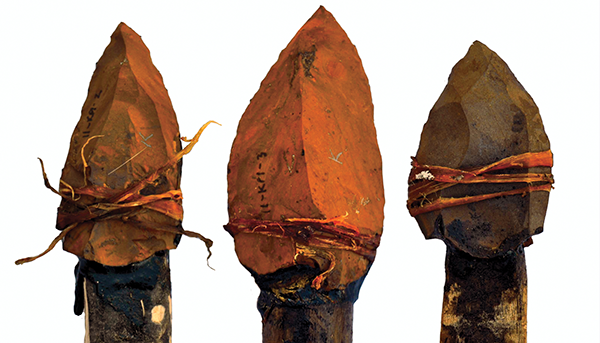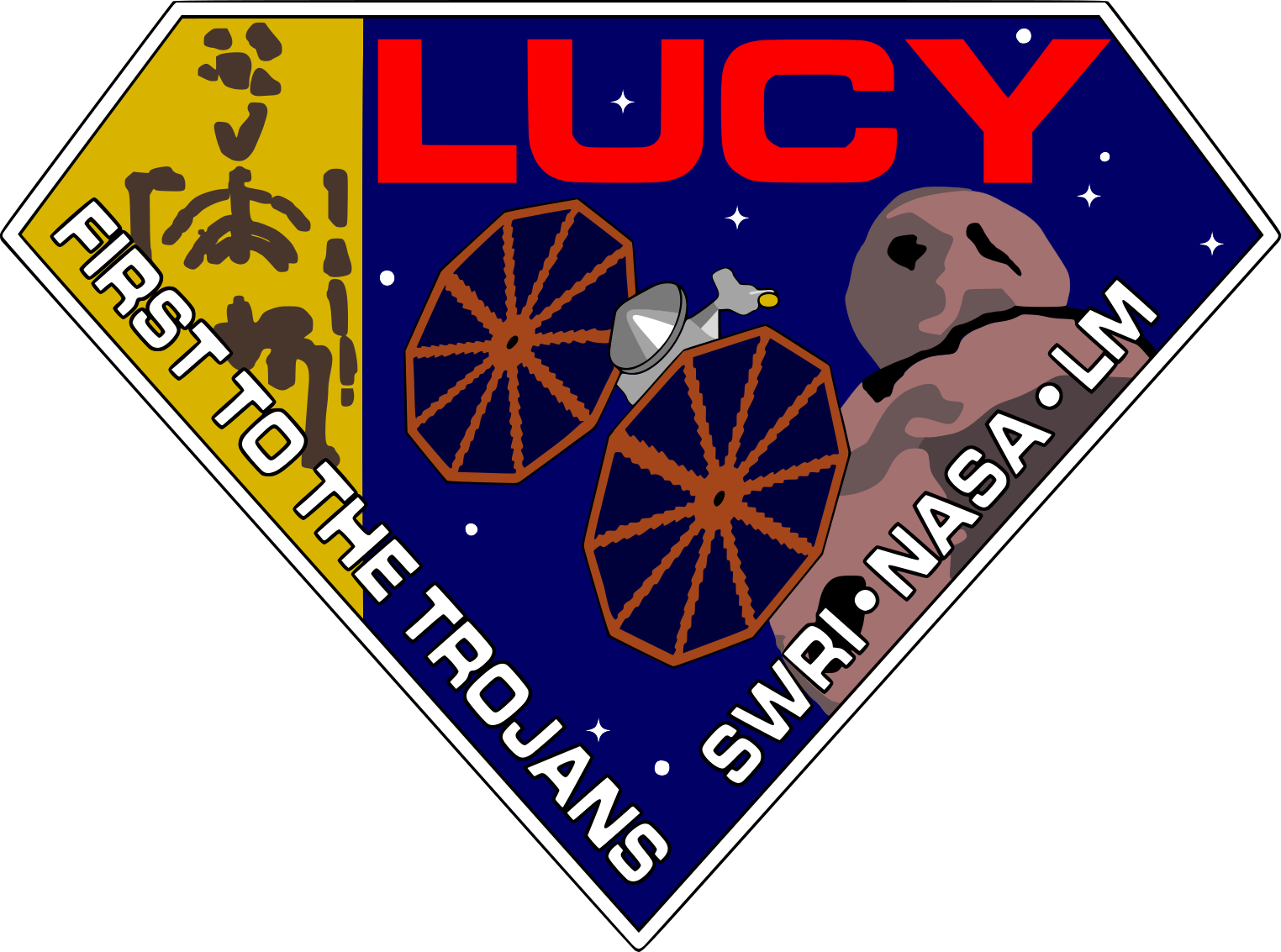
Middle School Third Place Winner
Annemarie Stanga, 8th Grade
St. Mary Catholic School, Littleton CO
I created my mission patch to show the parallel between Lucy and the Trojan asteroids and also to acknowledge those who played a part in carrying out the mission. The words on the outside say “Lucy–History on Earth and Trojans–History in Space.”
Lucy offered a key into human history here and is often called the “missing link.” Hopefully, the Trojans will also become a “missing link” for space history and give us a window into the past that we have not had before.

Patch design by Annemarie Stanga
One of the goals of the Trojan mission is to look at the history of our solar system. Since these are some of the oldest asteroids we can reach, they will be able to teach us about the area of space around us and how it evolved. In a similar way. Lucy tells us so much about the possibilities of evolution in humans here on Earth. My picture has similar themes to the words. Lucy is travelling in a rocket ship to the Trojan asteroids. Even though this is not what the mission will look like in reality, it does show some actual aspects. Lucy going to the asteroids shows the possible parallels between the two stories of human history and space history. This picture is also a reference to the name of the mission—Lucy in Space. The stars in the background show the evolution of space into which the Trojan asteroids could be a window. Stars change and develop, which is what evolution is. The colors in my mission patch are also symbolic. The rocket is red, white, and blue for NASA, who obviously plays a big part in this mission. For the words and the outlines, I used maroon and gold, the colors of Arizona State University. Arizona State University is where Donald Johanson. who found Lucy, is from. In this way, the university also plays an important role in the Lucy in Space Mission.
Be Part of
Ask An Anthropologist
By volunteering, or simply sending us feedback on the site. Scientists, teachers, writers, illustrators, and translators are all important to the program. If you are interested in helping with the website we have a volunteers page to get the process started.



